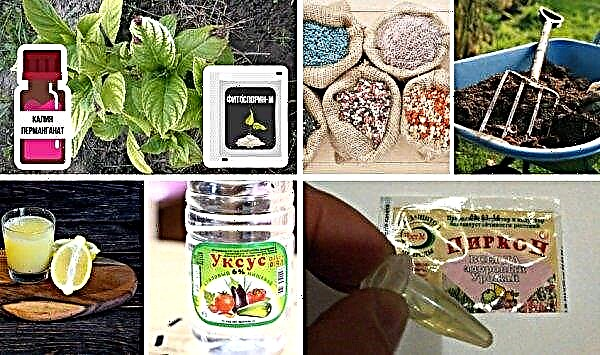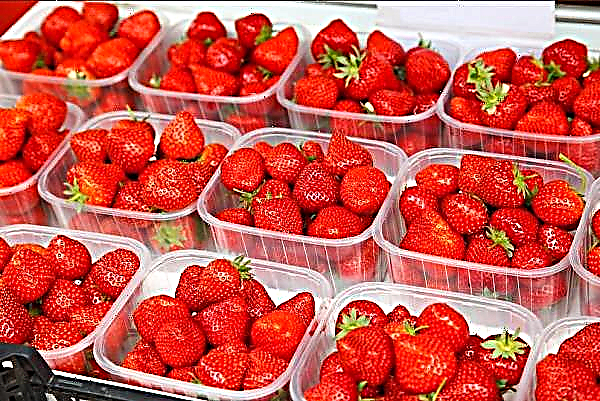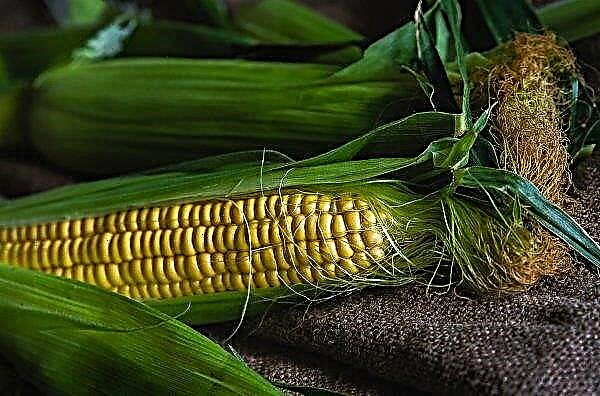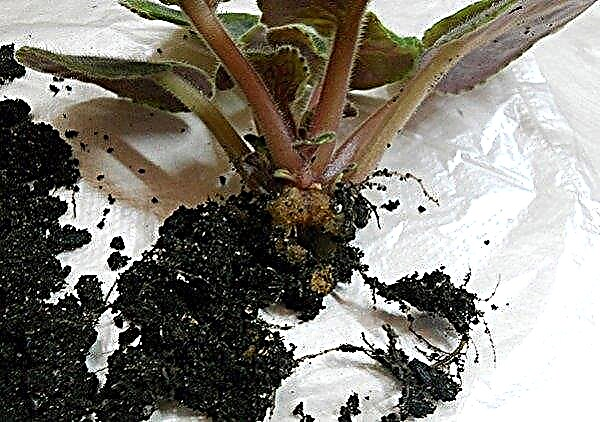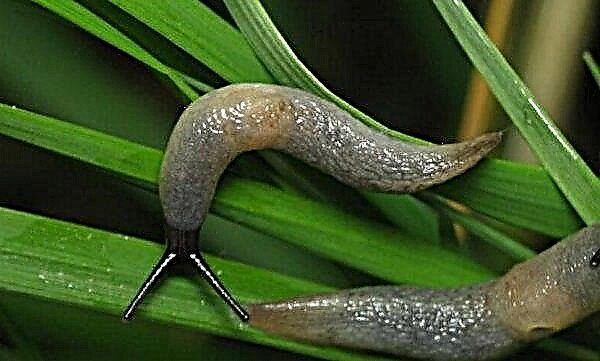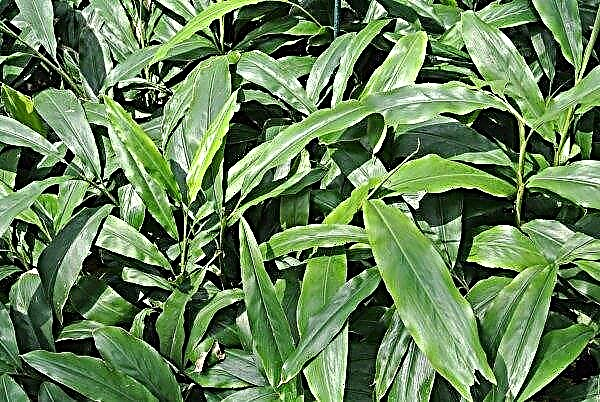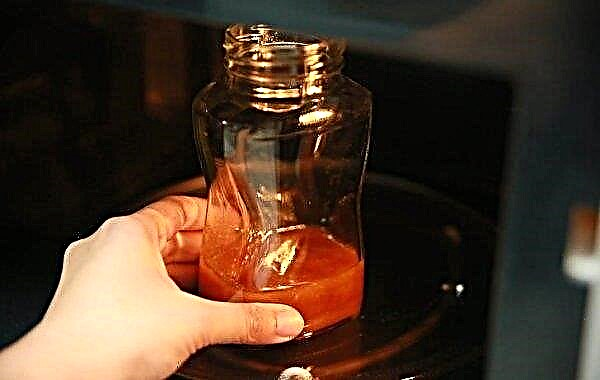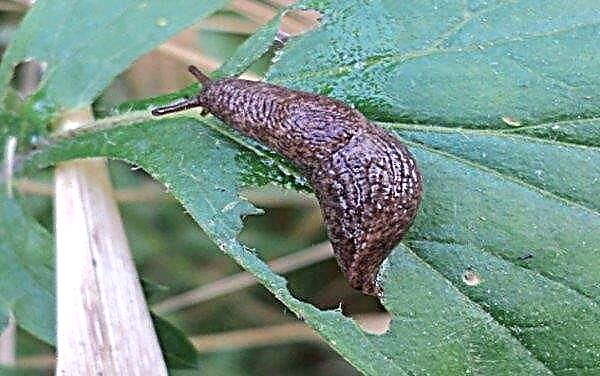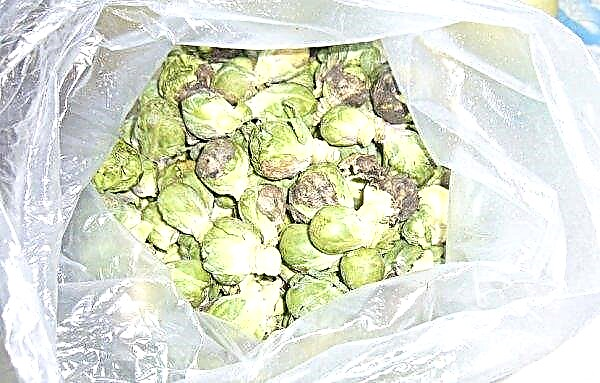Each gardener from central Russia wants to pick the sort of cucumber that will show a high yield in their climatic region. The Connie F1 variety has all the benefits of growing at home. The article will focus on the technology of planting varieties, the rules of care and control of diseases, as well as on the method of harvesting and storage of crops.
Characterization and description of the variety
“Connie F1” is one of the best varieties of early ripe cucumbers and belongs to the parthenocarpic type (it does not require pollination by bees to set fruit). Thanks to this, the variety is suitable for growing both in a film greenhouse and in open ground. It was launched in the early 2000s by the Biotechnika agricultural firm, which is localized in St. Petersburg. The variety was added to the state registry of the Russian Federation in 1999.
Did you know? Cucumber fruits contain a lot of vitamin C, B vitamins, folic acid, calcium, silicon, potassium, magnesium, phosphorus. These fruits contain a unique set of chemical compounds for rejuvenation, which is why they are also used in cosmetology.
Agricultural technicians brought Connie F1 specifically for mass cultivation in greenhouses at large enterprises, but summer residents fell in love with the variety and began to grow it in their own plots. The thing is that the fruits of the hybrid do not outgrow, retain their density and have no specific bitterness.
From the beginning of seedlings to the appearance of the first fruits, ready to eat, 47-50 days pass. The high yield is due to the fact that on average 6 ovaries are formed on each node in the variety under consideration. On average, the yield is about 11-12 kg / sq. m. "Connie F1" will give a lot of fruit even without careful maintenance of plantings, in addition, cucumbers will not mutate, outgrow, lose their density and taste.
The stem of the hybrid grows without restrictions, has a dense leafy coating. The fruits are oval-cylindrical, reaching a length of about 9 cm. The weight of cucumbers often does not exceed 80 g, even if the crop is harvested much later than the due date. Small tubercles and a small silvery pubescence of medium density are visible on the fruits.
Advantages and disadvantages of the variety
- The positive aspects of the domestic hybrid are as follows:
- unlike many other varieties of cucumbers, “Connie F1” stands out for a long fruiting period, which exceeds the standard 3 weeks;
- canned fruits have no voids;
- high resistance to root rot and powdery mildew;
- high yield of the crop, even with improper and infrequent care for planting;
- gardeners note the extraordinary taste of the fruits that will appeal to everyone.
- Like any other vegetable, Connie F1 has its negative aspects:
- Sometimes summer residents consider small tubercles and a sparse cover of thorns a drawback. Rather, this drawback is caused by the fact that all the familiar varieties of cucumbers have large coarse-humped fruits.
- It is believed that due to the small average weight of the fruits, the total yield (kg / sq. M) is significantly lower compared to some other varieties. But breeders assure that, subject to all agricultural standards, the yield will be at the highest level.
The hybrid has no unambiguous and obvious flaws, but its positive qualities attract more and more summer residents from year to year.
Optimal landing times
Planting dates will depend on the region, as well as on the place of cultivation - a greenhouse or open ground. On the packaging, the producer indicates that the seeds can be planted in open air in early May, making sure that the threat of night frost return is completely over. But it’s still better to cover the garden bed with the film for confidence, in addition, the greenhouse effect will allow you to keep the right amount of heat and allow the shoots to appear faster.
In a greenhouse, seeds can be planted earlier - in April and even in March, if you create the optimal microclimate (stable temperature of at least + 20 ° C and humidity of at least 90%).
Seedlings are planted at 20 days of age in late May - early June. In the northern regions of the country, where night frosts are still observed in May, seedlings are grown in a warm room, and its planting can be shifted to the end of June, but no later. In the greenhouse, seedlings are planted at any time of the year while maintaining the conditions necessary for growing.
Planting and growing varieties
It is important to follow the rules and planting technology for good seedlings, which in the future will become the key to a large crop. Whatever method you decide to grow the hybrid, it all starts with the preparation of seeds and soil. After proper sowing, you need to carefully observe the temperature regime of planting, irrigation technology and control the sufficient supply of sunlight.
Seedling method
Begin preparations for planting seeds for seedlings in March. Agronomists recommend planting Connie F1 seeds in peat cups: when transplanting seedlings to a permanent place in the root system of young plants, there will be no interventions, as is usually the case with the transshipment method. In addition, if seedlings are grown in peat cups, the risk of root rot in cucumbers is minimized.
The soil for seedlings should be light, with good permeability and breathability, but at the same time have a rich mineral composition. It is best to buy ready-made earth mixes for seedlings of early cucumbers, which include the Connie F1 hybrid.
If you want to prepare the substrate yourself, there is a universal formula:
- turf land (not collected in coniferous forests);
- peat;
- vermicompost or mature compost;
- river sand.
Before planting, seeds must be soaked. To do this, they are wrapped in wet tissue, covered with cellophane and sent to a warm place for three days, where they give their sprouts.
The day before the seeds are planted in peat cups, it is necessary to fill the prepared substrate. They fill 2/3 of the tank, then pour the soil with warm water and leave the tank warm until the next day. Seeds are planted in holes up to 1 cm deep. 2-3 seeds are placed in each hole, after 2 weeks less developed seedlings are removed and one sprout is left.Important! The temperature of the water for soaking should not be lower than + 26 ° C, otherwise the sprouts may not appear.
Seedling care consists of the following:
- Maintaining a constant temperature in a room with seedlings in the range + 26 ... + 28 ° С.
- Regular spraying with warm water.
- Shelter with a film for the whole day (however, you need to open the film for several hours for ventilation).
- 20 days after planting seeds for seedlings, seedlings can be transplanted into the open ground.

Seed directly into the ground
Planting seeds in the soil is made in late May or early June. The site for planting should be prepared in advance: remove all garbage and weeds, dig and enrich with organic fertilizers (bird or cow droppings, peat). The soil for planting should be light, preferably sandy, with acidity in the range of 6.4–6.8 pH. You can adjust the acidity of the soil on the site using wood ash or slaked lime.
When choosing a place, you should focus on the illumination and groundwater level. Connie F1 will produce a crop in a semi-shady place, but it’s still better to select the most lighted area. The groundwater level should not be close to the surface (preferably below 1 meter), since excess moisture can provoke root rot in plants.
Before planting, the seeds are soaked (as in the seedling method). Disembarkation is carried out in advance soil poured with warm water. Seeds are planted 2 cm deep, 2-3 seeds are placed in each well. The distance between the holes should be 30 cm, between the rows - 50 cm. Immediately after planting, the holes are sprinkled with loose earth, and the bed is covered with a film for 5-6 days. At this time, the bed should be sprayed with warm water every day for the first week. Then reduce the frequency of watering by 2-3 times. The film should be opened for several hours a day for ventilation.Did you know? It is scientifically proven that cucumbers improve the thyroid gland, which suffers in conditions of increased radiation background. Zelentsy also cleanse the walls of blood vessels from "bad" cholesterol.

Cucumber care after planting
The quality and the quantity of the crop will depend on the quality of care for the hybrid, so you should use the tips below.
Watering and feeding
Watering the hybrid “Connie F1” is carried out according to certain rules. The amount of water that 1 square meter needs. m plantings, depends on the degree of penetration of the roots. It is known that a two-week seedling of a hybrid is buried by roots approximately 3 cm. For such plants, 3 liters per 1 sq. M will be sufficient. The roots of fruiting plants are at a depth of 15-17 cm, therefore, per 1 square. m need to pour in by irrigation 17 liters of water. The pattern is as follows: 1 cm of root water goes 1 liter of water.
As for top dressing, they will differ depending on the degree of development of the plant. Before flowering, cucumbers are fed once. For 10 liters of water, 1 tbsp. l complex "Agricola-5" by the method of abundant spraying.
During the flowering period, the hybrid must also be fertilized only once, only in this case, by irrigation. Superphosphate, urea, potassium sulfate (1 tsp each) and 1 tbsp. Are added to a ten-liter bucket of water. organic fertilizer (humate "Fertility").
During fruiting, cucumber plantations should be fertilized 4 times with an interval of 10 days to increase yield and extend it:
- first feeding will consist of nitrophosphate and potassium humate (1 hour per bucket of water). You need to make it by irrigation at the rate of 5 liters per 1 square. m;
- for the second top dressing in a bucket of water, dilute ½ liter of manure and 1 part potassium sulfate. The mixture is applied by irrigation at the rate of 6 liters per 1 square. m;
- third feeding should consist of 1 tbsp. nitrofoski and 2 tbsp. integrated organic fertilizer diluted in a bucket of water. Fertilizer should water the plantation at the rate of 6–9 liters per 1 square. m;
- last feeding will consist of 1 tbsp. complex organic fertilizer dissolved in 10 l of water. For 1 square. m when watering should leave 5 liters of the mixture.
Important! During fruiting, in contrast to public opinion, it is not recommended to use nitrogen fertilizers. They contribute to the fact that the fruits become watery, lose their density and aroma.
Garter and bush formation
It is best to form a bush of the described hybrid by the method of horizontal garter. Along a row from both ends, two metal or wooden pipes should be driven into the ground. Between these pipes, pull ropes or wire in several rows. The interval between horizontal threads should be 10 cm: cucumber shoots will wander along them. This bush formation will help you easier to harvest and take care of the plantings.

Soil care
Loosening of the soil should be carried out regularly, because after heavy irrigation under the sun, a crust forms, which prevents the flow of water and air to the root system of plants. Together with loosening, weeding should be carried out if this is required by the case (when a small weed appears). Weeds are best removed immediately, because their roots absorb moisture and minerals from the soil.
Mulching is an important step in the care of cucumber plantations, since mulch protects the soil around the plantings from unwanted evaporation of moisture. For this procedure, you can use sawdust, dry grass, straw, peat. These substances should be sprinkled on the soil around the cucumbers immediately after watering.
Disease and pest resistance
The most common pests and diseases of the hybrid:
- If the leaves of the cucumber become wrinkled and curl, then the plant is affected aphids. To combat it, an aqueous infusion of red pepper is used.
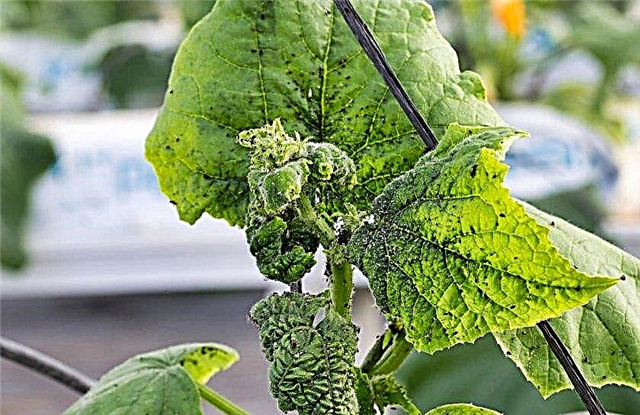
- Twisted sheets may also indicate a lesion. cucumber bug. It can be destroyed by the infusion of tobacco dust or chamomile.
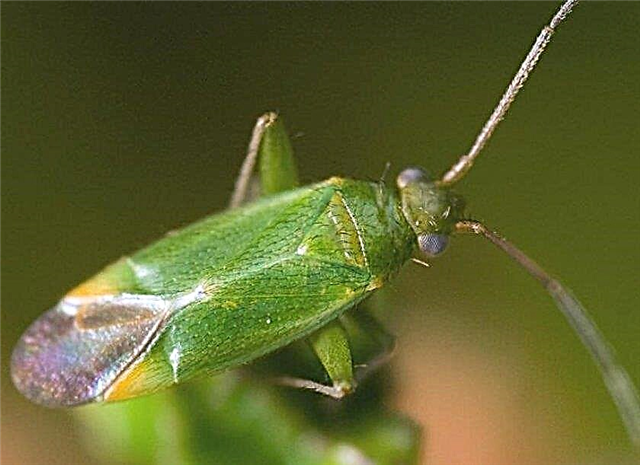
- Sugar plaque on leaves indicates the invasion of the greenhouse whiteflies. Cucumbers should be immediately treated with Actofit (0.2%) according to the instructions for use. Otherwise, the foliage will begin to blacken and fall.
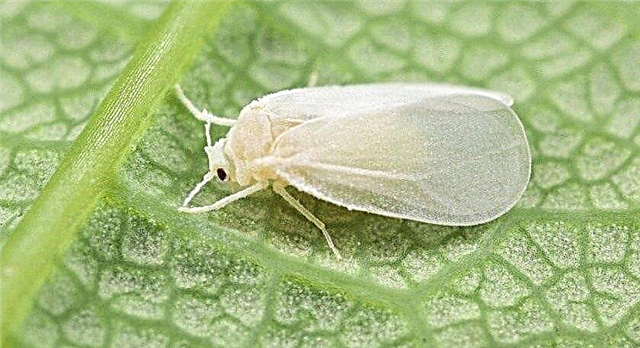
- Individual small white dots on the foliage indicate a lesion. spider mite. You can overcome it with infusion of wormwood or dandelion.
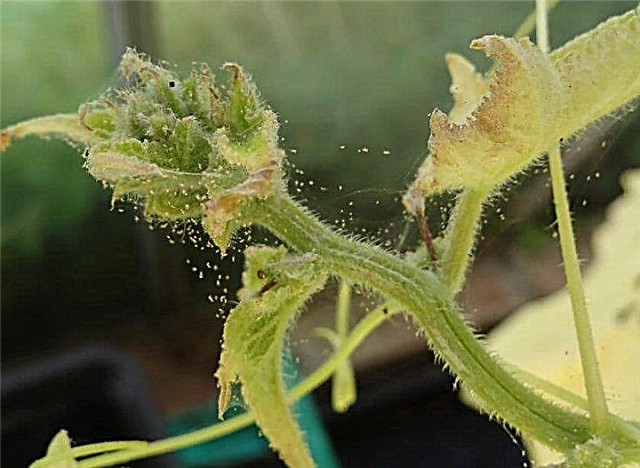
- Wet spots on the bottom of the stem are a sign white rot. It is necessary to treat plants from this disease with potassium permanganate.
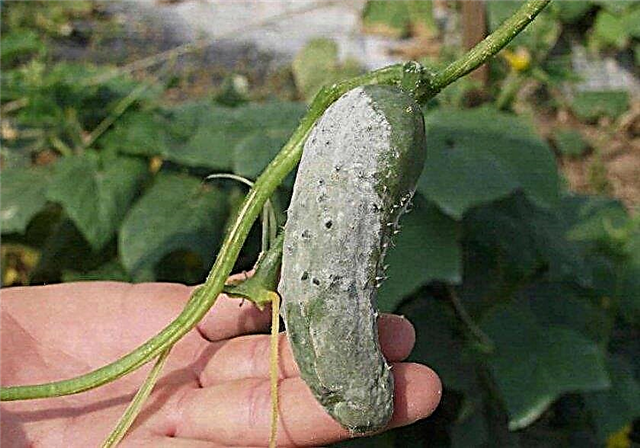
- Brown spots throughout the plant, fruit covered with ulcers - signs of damage anthracnose. It is necessary to deal with it using bordeaux liquid or copper chloride.

- At bacteriosis spots and angular shapes appear on the stems and leaves of the cucumber, which then pass on to the fruits. A 0.02% zinc sulfate solution will help overcome this disease of cucumbers.

Harvesting and storage
Harvest during the fruiting period should be every 2-3 days, as the “Connie F1” has a high degree of yield. You need to tear off cucumbers with a tail - so you can extend the shelf life of the fruit fresh. You should also not wash off the coating with cucumbers until they are consumed. Fruits are stored for a month at room temperature or in the refrigerator.
“Connie F1” is a universal variety suitable for consumption both fresh and canned. This hybrid is unpretentious in care and gives good yield indicators in the middle zone of Russia, which attracts many summer residents.








